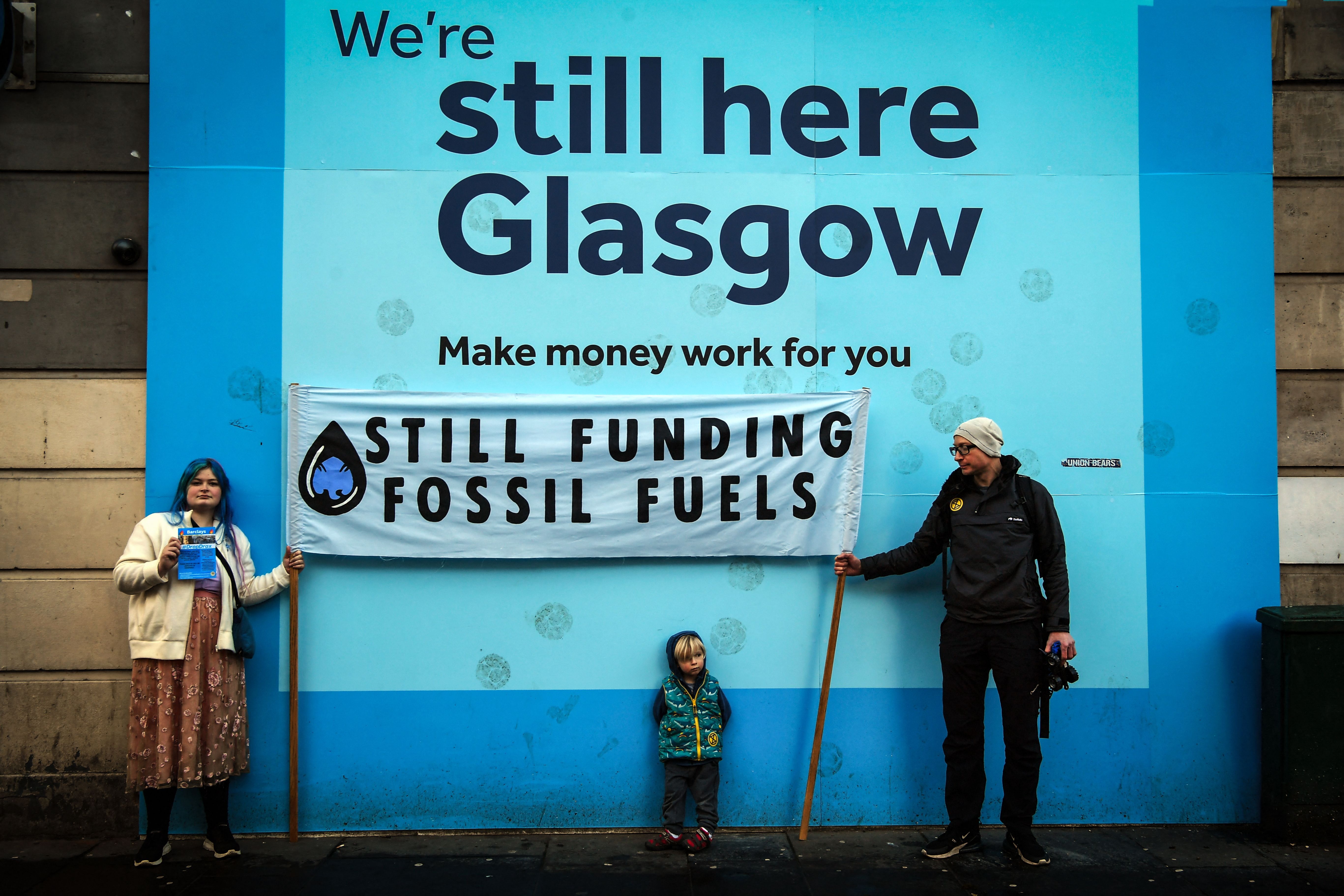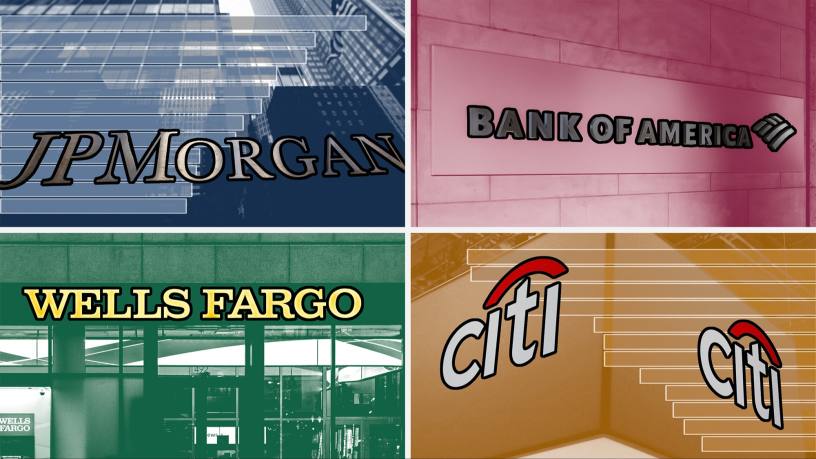Financing of fossil fuel activities grew by almost $200bn in 2024, reversing a three-year trend that saw the world’s largest banks cut their financing to polluting companies.
Shareholders and non-profits have accused banks of “climate hypocrisy” and exposing themselves to increased liability risks.
Overall fossil fuel financing had been falling since 2021, but last year saw the world’s 65 largest banks by assets commit $869.4bn to oil, gas and coal companies, $162.5bn more than 2023, according to the latest Banking on Climate Chaos report by Rainforest Action Network, BankTrack and other non-profits.
“If the BOCC report is accurate, it isn’t just a disappointing reversal, but a betrayal,” said Andrew Harper, deputy chief executive at Epworth Investment Management, which holds shares in HSBC, Barclays and other banks.
According to the BOCC’s findings, the “primary contributor” to last year’s uptick in fossil fuel financing was an almost $117bn increase in the underwriting of bonds and shares by banks for fossil fuel companies. Financing covered in the report includes loans, bonds and equity issuance.
However, Nikki Reisch, climate and energy programme director at the Center for International Environmental Law, said banks’ “backsliding” on their climate promises and increasing fossil fuel financing “correlates” with “the backlash against ESG investment”. Banks are sacrificing long-term financial stability to reap short-term profits and avoid being targeted by “aggressive” right-wing governments, she added.
Two-thirds of the banks included in this year’s report increased their financing of fossil fuel companies from 2023 to 2024, with three US banks — JPMorgan, Citigroup and Bank of America — and one European bank, Barclays, recording the biggest absolute increases in financing year on year, according to the BOCC report.
Among the top 10 banks increasing fossil fuel financing from 2023 to 2024, Barclays recorded the biggest annual percentage change (55.5 per cent), according to BOCC’s findings.
As a shareholder, Harper said Barclays’ position was especially “alarming”. “[Barclays has] claimed bold net zero ambitions and bringing an end to fossil fuel financing, yet they’re now ploughing more capital into fossil fuels. That’s not climate leadership, it’s climate retreat,” said Harper, who accused banks of “climate hypocrisy” in touting climate credentials with one hand and signing oil and gas deals with the other.

A Barclays spokesperson did not comment on the specifics of BOCC’s findings, but said it provides finance to meet consumer and businesses energy needs while financing the scaling of clean energy, by committing to facilitate $1tn of sustainable and transition finance by 2030, and investing £500mn directly into climate tech start-ups by 2027. “These are significant interventions to help build a clean energy system with resilient and affordable energy,” the spokesperson added.
JPMorgan retained its position as the world’s biggest fossil fuel financier in 2024, and the biggest overall since 2021. Last year, the US’s biggest bank by assets committed $53.5bn in financing to fossil fuel companies, a difference of almost 40 per cent compared to 2023, according to BOCC’s analysis.
Since 2021, JPMorgan was also the biggest financier of fossil fuel expansion, committing $89bn in the last four years to companies building out new fossil fuel infrastructure or supply, according to BOCC’s findings. In an emailed statement, JPMorgan said as one of the world’s largest financiers to both traditional and clean energy companies, its own data “more comprehensively and accurately” reflects its financing activities than estimates by third parties.
Last year, following pressure from investors, JPMorgan published its energy supply financing ratio — how much clean energy it finances compared to fossil fuels. For the year ending December 31 2023, JPMorgan’s ESFR of 1.29 reveals that for each dollar it invests in high-carbon energy, $1.29 goes into low-carbon energy supply. According to research by BloombergNEF, a 4:1 ratio of clean energy to fossil fuel financing is needed this decade to keep global warming within 1.5C.
While overall financing for fossil fuel expansion has declined since 2021, last year it increased by $85bn, the latest BOCC report reveals.
“Banks pouring hundreds of billions of dollars annually into fossil fuel expansion is at odds with the science, the law, and their own interests,” said Reisch at CIEL.
She said continuing to finance the fossil fuel sector exposes banks to future liability, with banks inevitably being held to account for their role in “facilitating climate harm”.
Reisch accused banks of “bending with the political winds” and ignoring the systemic risk that climate change poses to the global economy, financial markets and “life as we know it.”
In recent years, US banks have faced legal challenges from attorneys-general in Republican-led states for their stance on climate issues and membership of voluntary climate initiatives such as the Net-Zero Banking Alliance.
“These trends only underscore why voluntary pledges do not suffice; we need binding regulations, effective enforcement, and legal accountability for fossil financiers,” said Reisch.
US and Japanese banks dominate ranking
However, since clinching a second term as US president, Donald Trump has pulled the US out of the Paris climate accord and repealed bans on drilling for oil in the Arctic and liquefied natural gas export.
Following his election victory last November, 14 leading US, Canadian and Japanese banks, including Bank of America, Citigroup and JPMorgan, withdrew from the NZBA.
The North American and Japanese banks that exited the NZBA in late 2024 and early 2025, dominated the top 12 financiers of fossil fuels globally in 2024, according to the BOCC report.
Ranked 11th, Japan’s SMBC left the NZBA in March this year. It was the only bank in the top 12 that saw its financing of fossil fuels decline from 2023 to 2024.
Ups and downs in Europe
Barclays was “the largest fossil fuel financier” in Europe in 2024, according to the BOCC report, and the only European bank to feature among the top dozen financiers.
Of the 20 banks that reduced financing to fossil fuel companies in 2024, Dutch bank ING saw the steepest decline. CaixaBank Group, DZ Bank, Lloyds Bank and Intesa Sanpaolo also saw financing fall year on year.
Despite a few European banks inching forward, Lucie Pinson, founder and executive director at French non-profit Reclaim Finance, said new rules, covering corporate as well as project financing, are needed to prohibit financing of fossil fuel expansion.
According to the BOCC report, while many banks have policies restricting financing to fossil fuel projects, 90 per cent of financing is provided to corporations, not projects.
“We need to see regulations tackling where financing is clustered,” said Allison Fajans-Turner, policy lead at RAN and one of the co-authors of the 2025 BOCC report, adding that banks need to “condition” financing towards those fossil-fuel companies showing demonstrable progress in transitioning to net zero.
She also called on banks’ shareholders to encourage financial institutions “to change course”. However, Harper questions the role shareholders and markets can actually play in holding banks accountable.
“If investors can’t stop banks from financing climate collapse, even after years of engagement, then something is broken. We need to ask whether capital markets, as currently structured, are even capable of responding to the greatest crisis of our time,” he said.
While some banks distinguish between financing companies active in upstream oil and gas — exploration and production — and ‘‘midstream” oil and gas infrastructure (pipelines and storage), the BOCC report analyses bank financing for approximately 2,730 group-level oil, gas and coal companies that are active across the entire “fossil fuel life cycle”. This includes subsidiaries involved in the extraction, transportation, transmission, distribution, combustion, trade, or storage of any fossil fuels or fossil-based electricity.
This year’s BOCC report analysed the world’s 65 largest banks by assets according to S&P Global’s annual rankings. Based on year-on-year changes in bank sizes, five new banks were included in this year’s analysis — Capital One, Sberbank, Commerzbank, Huaxia Bank, and Itaú Unibanco.



